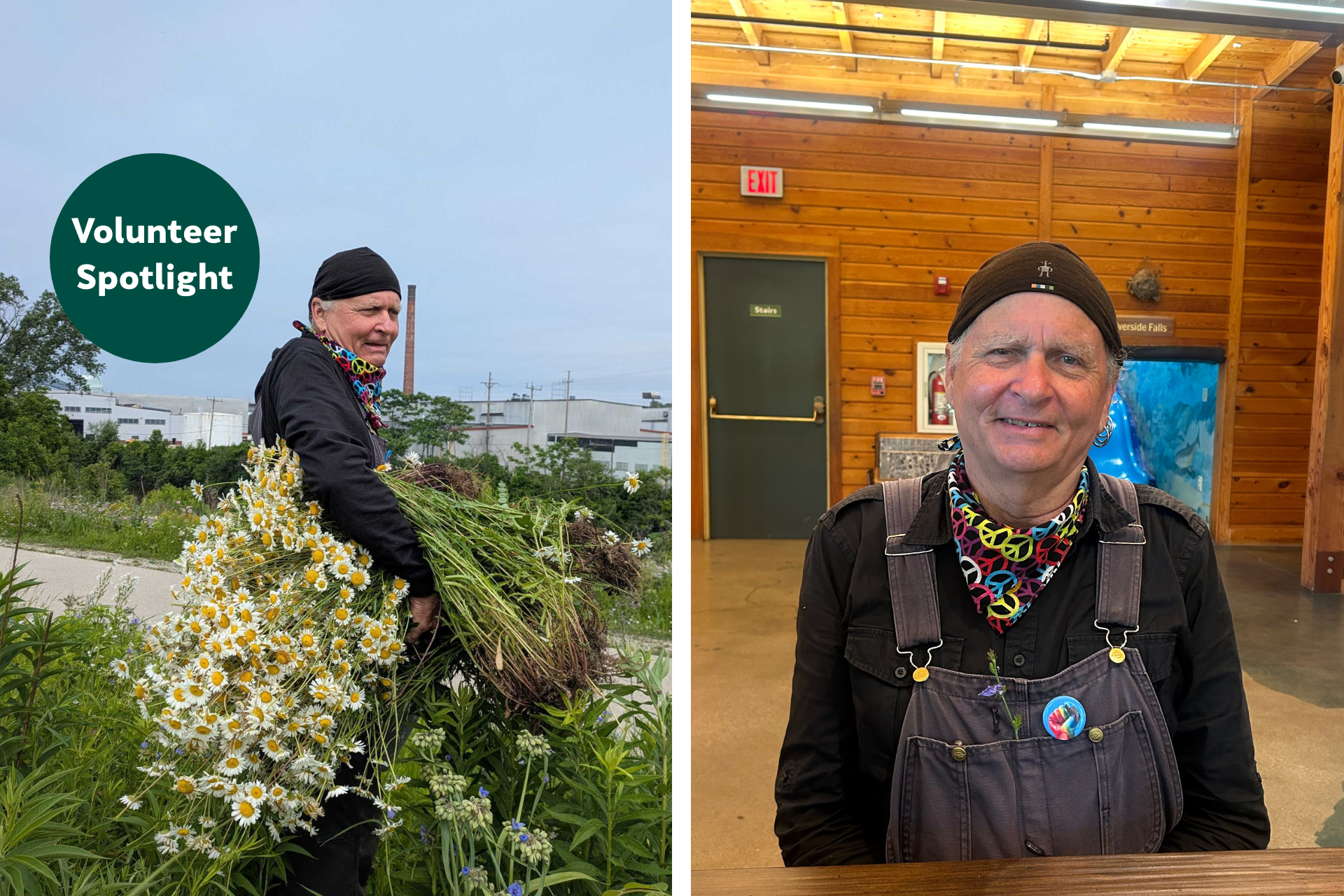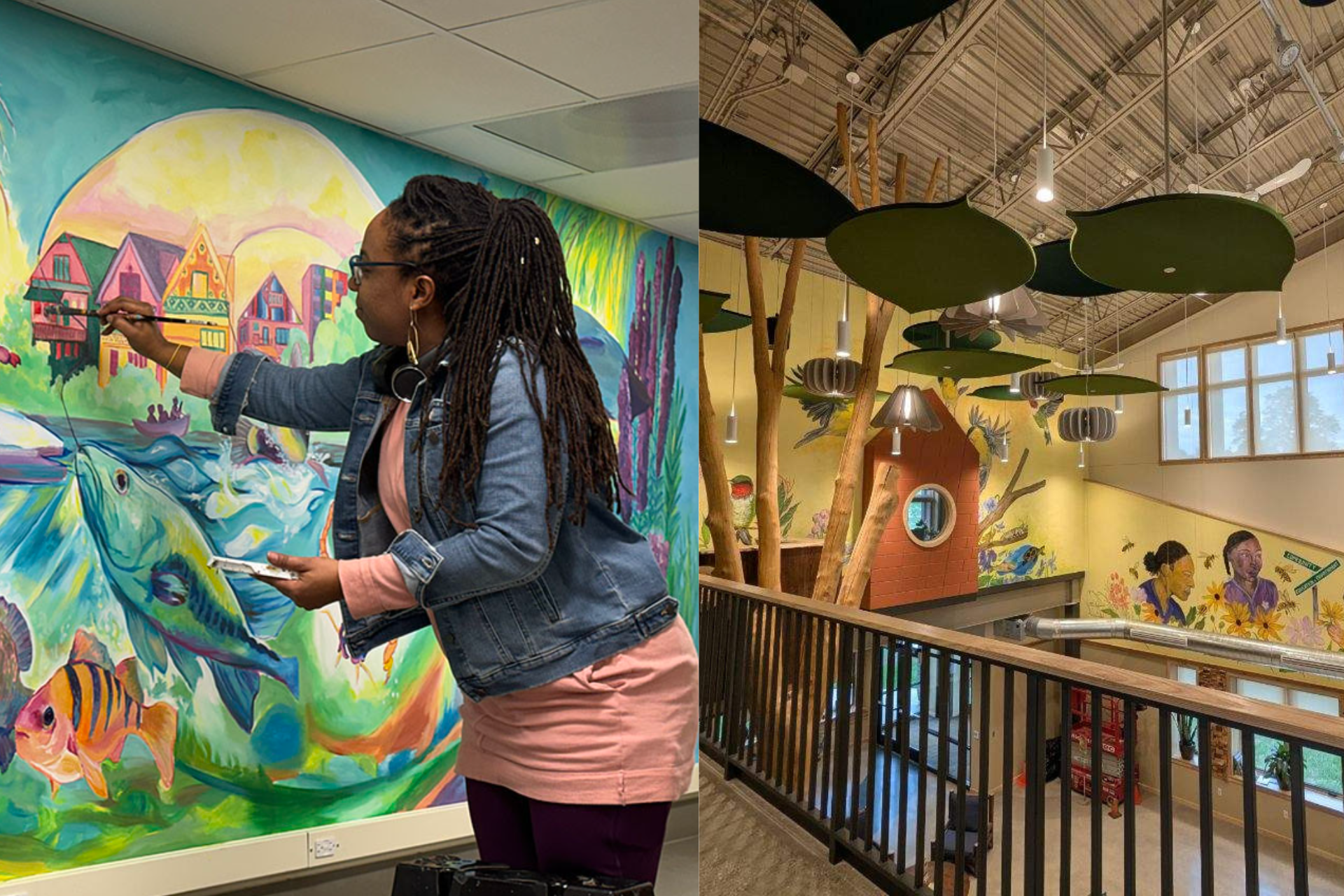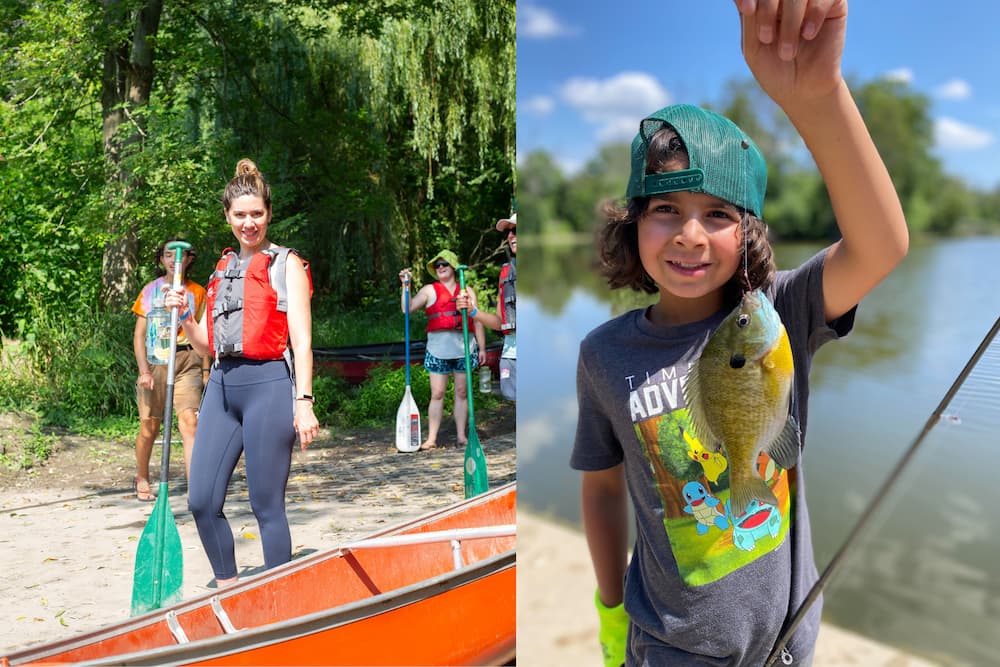Eastern Cottonwood - Native Tree Spotlight
The Eastern Cottonwood (Populus deltoides) is a native Wisconsin tree that generates a lot of conversation. It’s a fast-growing deciduous tree, and at maturity, it is large, spreading, and impressive, sometimes reaching 150 ft tall.
However, many people, especially in urban settings, shy away from planting cottonwoods because of their proliferate seeding in the early summer. They produce catkins that release thousands of puffy white seeds into the air. One online nursery I came across in my research suggested that this tree, perhaps because of its fluffy seeds, relatively brittle wood, and preference for moist soils, was not “urban approved.”
But, the cottonwood is a crucial species to Wisconsin ecosystems. The National Wildlife Federation recently released a list of keystone species for our region, including the Eastern Cottonwood. Keystone species are critical to the food web of local ecosystems, and often necessary for animals, insects, and birds to survive. According to the list, the Eastern Cottonwood supports 249 caterpillar species, making it vital to native insect populations, which in turn provide the food supply for Wisconsin’s insectivorous birds, like the yellow warbler and the Baltimore oriole.

Through their participation in the life cycle of so many insects, the cottonwood’s impact reaches through the entire food chain, including mammals like white-tailed deer and beaver, and bird species that forage from the trees themselves. The puffy cottonwood seeds are also often used as nesting material by birds, and the roots of the tree knit the soil together and prevent erosion. For these reasons, it’s important for habitats like the natural areas we manage to exist in urban spaces, so that these trees have a place to reside while they do their work for our local ecosystems.
In addition, cottonwoods have captivated human imagination for centuries. Many indigenous tribes across the United States tell stories about the cottonwood tree. For many people, these trees are animated, active participants in the community. In a story told by Dakota elder Mary Louise Defender Wilson (linked below), the cottonwood was chosen as the dwelling place for a curious star who heard the noise of a human village and wanted to be near it without drawing attention. This belief is said to be connected to the very structure of cottonwood branches – if you snap a downed branch, and if it’s not too new or too old, it’s said that you can see the pattern of the star living there.
When I started at the Urban Ecology Center in early June, the female cottonwoods were releasing their seeds to the wind. The seeds are attached to little white hairs called pappi, allowing them to float great distances – sometimes as far as 100 miles – to find a new home. The clouds of puffy white seeds float by much like snow, and create the same sense of wonder in me. As I walked the trails at Riverside Park, accompanied by the swirling fluff, I hoped that the seeds traveling by me would find some moist soil, root, and grow, even in our urban spaces. Let others complain about the fluff of cottonwoods – I’ll chase it wherever it leads me.
Want to learn more about cottonwood seeds? Check out this episode of Chad the Nature Dad with our own Chad Thomack!
Sources (7/10/2024):
- https://fmr.org/news/2016/11/10/saving-our-cottonwoods
- https://natureattheconfluence.com/learn-about-our-amazing-cottonwood-trees/
- https://arboretum.harvard.edu/stories/speak-cottonwoods/
- https://www.arborday.org/programs/nationaltree/cottonwood.cfm
- https://www.montananaturalist.org/blog-post/the-importance-of-a-cottonwood-twig/#:~:text=The%20Lakota%20call%20it%20the,the%20people%20as%20they%20worked.
- https://files.dnr.state.mn.us/education_safety/education/plt/activity_sheets/star-cottonwood-tree-story.pdf
- https://kb.jniplants.com/eastern-cottonwood-populus-deltoides
- https://www.nwf.org/Garden-for-Wildlife/About/Native-Plants/keystone-plants-by-ecoregion?fbclid=IwZXh0bgNhZW0CMTEAAR2rwC_7TI9X6mBzBEHyb17VT8gDU6jJS2i_6lBUqk687FGZoxcS1UjelnA_aem_FQ6LQhdJzwDdT0Lty5yWxw




.jpg)



.png)
.png)